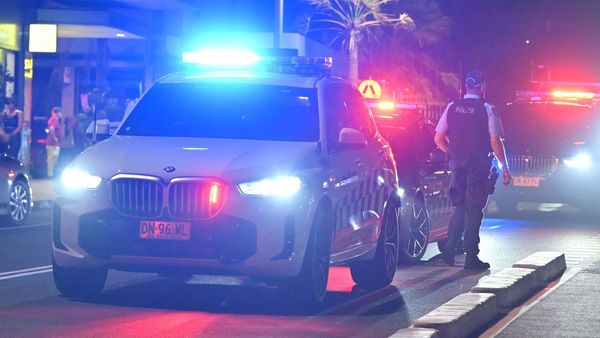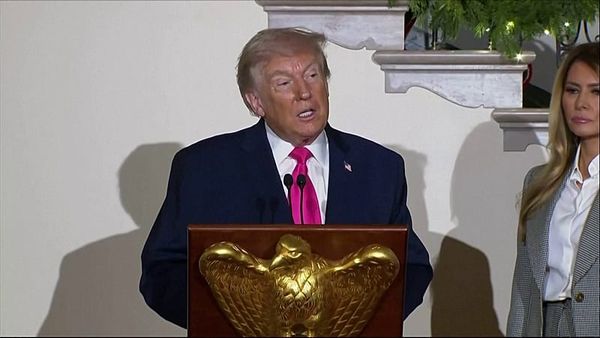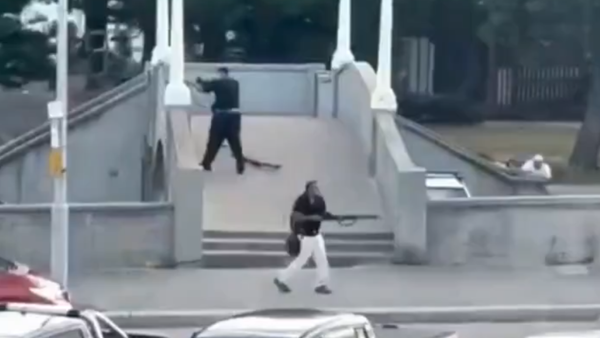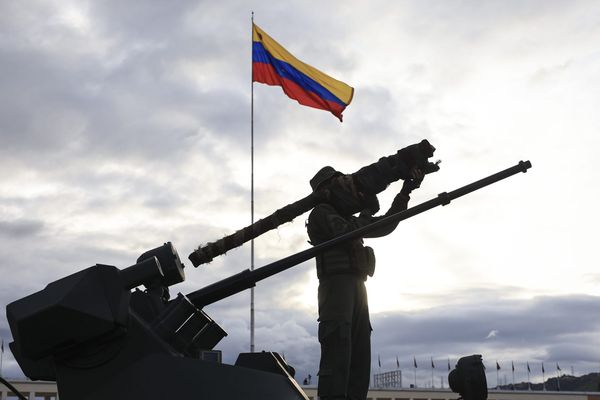
Whatever Donald Trump discussed with Vladimir Putin in Alaska last month, the outcome has only been a stepped increase in Russian aggression that has now forced Nato’s military into action. On Tuesday night 19 Russian drones entered the country’s airspace, according to the prime minister, Donald Tusk – a number that cannot be easily explained away as accidental.
Until that point, Russia’s war in Ukraine had not spilled over in a notable way to a Nato country. Though the drone incursion cannot be described as militarily significant (only one house has been reported damaged so far) the Polish incident is qualitatively different from anything that has happened since February 2022.
A month ago a single Russian drone exploded in eastern Poland, which was at the time notable. Two days ago, Estonia complained that a Russian Mi-8 attack helicopter had violated its airspace in the Baltic Sea for the third time this year. This time the drones forced a closure of four airports overnight, some flying via Belarus.
There is a fit with other post-Alaska Russian attacks in Ukraine, however. Last month, Russia returned to its campaign of bombing Ukrainian cities, killing at least 18 people in Kyiv in late August. On Sunday, the Kremlin went one further. For the first time, a key Ukrainian government building, the cabinet building, was struck as part of a massive nationwide assault of more than 800 drones that stayed inside Ukraine.
As for the overnight attack, it is not clear what, if anything, was being targeted. Flights paths are usually pre-set at launch, but they can be complicated. Belarus, an ally of Russia, said some drones had gone off-course because they were jammed, though that appears unlikely given that some drones landed well inside Poland.
One fragment was found in Olesno, 250 miles from the Ukrainian border, and the drone landed in a field at Mniszków, about 160 miles in. Germany’s defence minister, Boris Pistorius, said their flight paths had been chosen deliberately and that there were “no grounds to suspect that this was a course-correction mistake”.
So far, as Fabian Hinz of the International Institute for Strategic Studies has noted, all of the drone fragments recovered in Poland were of cheap, light Gerbera models, usually used as unarmed decoys to overwhelm Ukrainian air defences, not more dangerous Shaheds, which can carry 20kg of explosive or more.
The puzzling question, though, is what does Russia gain from such an obvious escalation? At the simplest level, there was an intention to create fear. A Russian military blogger with 1.65m followers took pleasure in claiming that a Russian Shahed was “flying towards the Polish city of Rzeszów” at just before 1am Polish time, emphasising that the city was where military logistics passed from the west to Ukraine.
Citizens in three eastern Polish regions were told to remain indoors on Tuesday night, while one Polish media outlet, Wyborcza, discussed “what should be in an evacuation backpack” in its liveblog. It is a concern that will be shared across eastern Europe, where memories of past Russian domination mingle with current concerns.
Moscow may also have wanted to test Nato’s air defences with its fast-evolving long-range drone capability, developed over three years of constantly attacking Ukraine. For the European defenders, the results were mixed. Certainly Nato mounted an impressive multinational defensive operation, the heart of the alliance’s purpose.
Dutch F-35 fighter jets flew alongside Polish F-16s, supported by German Patriot air defences and Italian AWACS mobile radar aircraft. And above all, there were no casualties or serious damage. But, Tusk said, only three or four of the drones were shot down – a low proportion, and well below anything that Ukraine achieves. Last night Ukraine’s air force reported eliminating 93% – 386 out of 415.
The reality, as Hinz observed, is that western air defences have not been designed to tackle cheap swarms of Russian drones – Geberas are made of polystyrene and cost about $10,000 each. Effective ground-based air defences such as the German Gepard have relatively short ranges. Using planes is potentially expensive and “requires a high pace of operations if the threat is continuous”.
Otherwise, the gain for Russia is less obvious. Within hours the UK defence secretary, John Healey, said he had asked the British military to “look at options to bolster Nato’s air defence over Poland”. One option is to return the six RAF Typhoons that were deployed in policing Polish skies six weeks ago alongside the Dutch jets, so the most likely immediate outcome is more Nato in eastern Europe, rather than less.
But Moscow’s most important audience is in the White House. The Polish incursion is a fresh test of US commitment to Nato, at a time when the White House has been considering whether to pull back from deployments in Europe in favour of defending its homeland and deterring China in Asia. Perhaps the Kremlin hopes that Trump will be so keen to avert escalating the US commitment to Europe that he will again pressure Ukraine into agreeing a peace on Russian terms.
Matthew Savill, from the Royal United Services Institute thinktank, wonders if the Kremlin intends “to expose differences in response – the US might be blase while the Europeans split along a spectrum of how firm to be”. In that respect it is an unsettling moment. Without a firm diplomatic response, perhaps in the form of sanctions escalation, there is every possibility the Kremlin will harass Poland in a similar fashion – or somewhere else in eastern Europe.







